The New Gastronome
Back in Black
A Quick Guide to Fermented Garlic – A New Kind of Black Magic
by Good Mood Food Club
by Good Mood Food Club
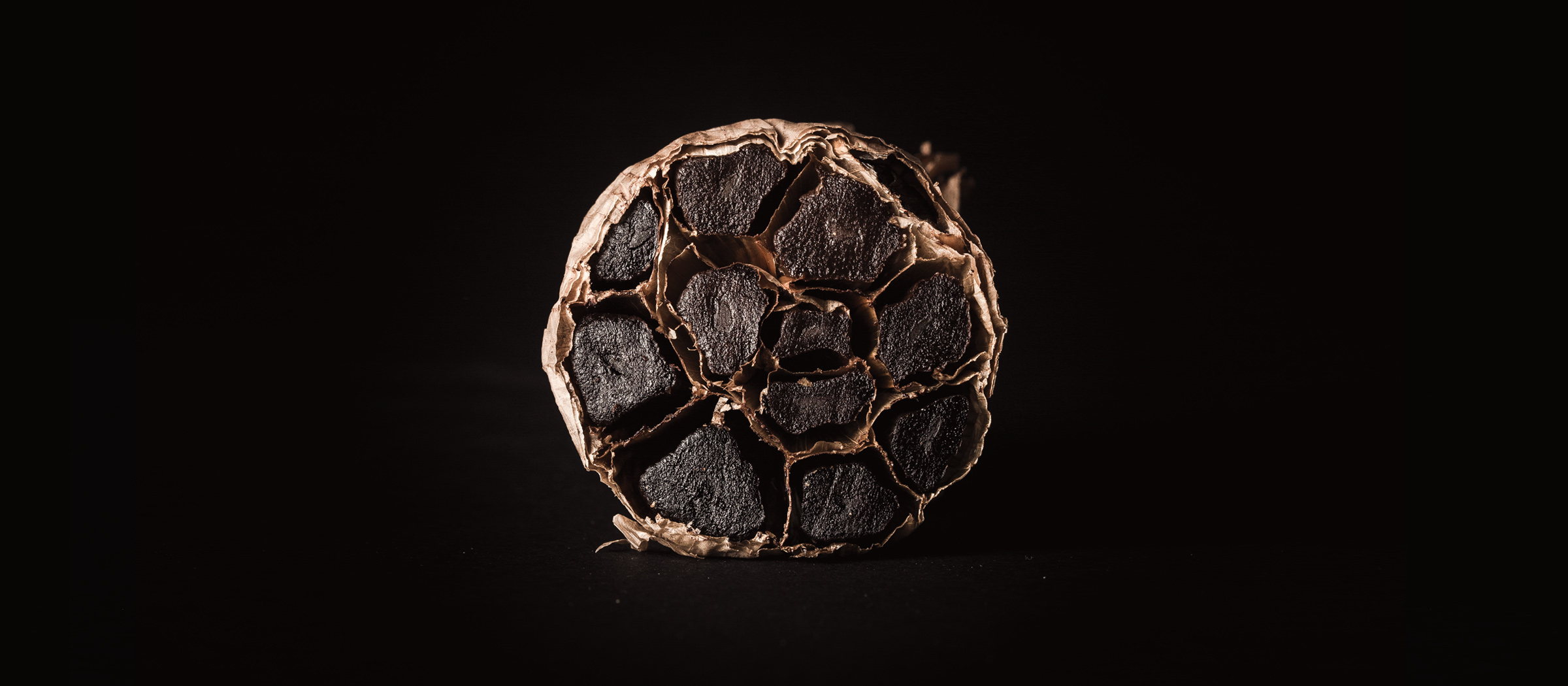
Have you ever tasted black garlic? If you have, you know we’re talking about a type of magic. Though at first glance it may seem like the garlic we all know, in reality, it is transformed, at its most basic level, into a completely different product.
A few months ago we decided to deepen our understanding of the processes behind this magical ingredient. We were inspired for several culinary reasons, but mostly to answer the question: how far could we go with this special product?
The earliest evidence of black garlic usage was found in Asia, and was supposedly used in Korea, Japan and China for hundreds of years for many different purposes. Specifically, in Korea, black garlic was known for its medicinal properties, while in Thailand it was believed to grant longevity and immortality. Did we mention the word magic yet?
Black garlic was introduced to the western world in 2008 via chefs who saw its potential in the kitchen. They relished its unique flavor profile, which is reminiscent of a sweet syrupy characteristic, some hints of seared meat, fried onions, balsamic vinegar and tamarind. This notion was especially attractive to the modern kitchen for its ability to conjure complex flavors without the addition of artificial ingredients or preservatives.
This new mystery product, which may appear as normal garlic when disguised under its thick shell, has become a favorite for many to research and explore in the kitchen. It can be made on one’s own pretty easily, it can be implemented in every cuisine, and it hits the culinary notes on every part of the orchestra. If you ask us – it’s a black gold mine.
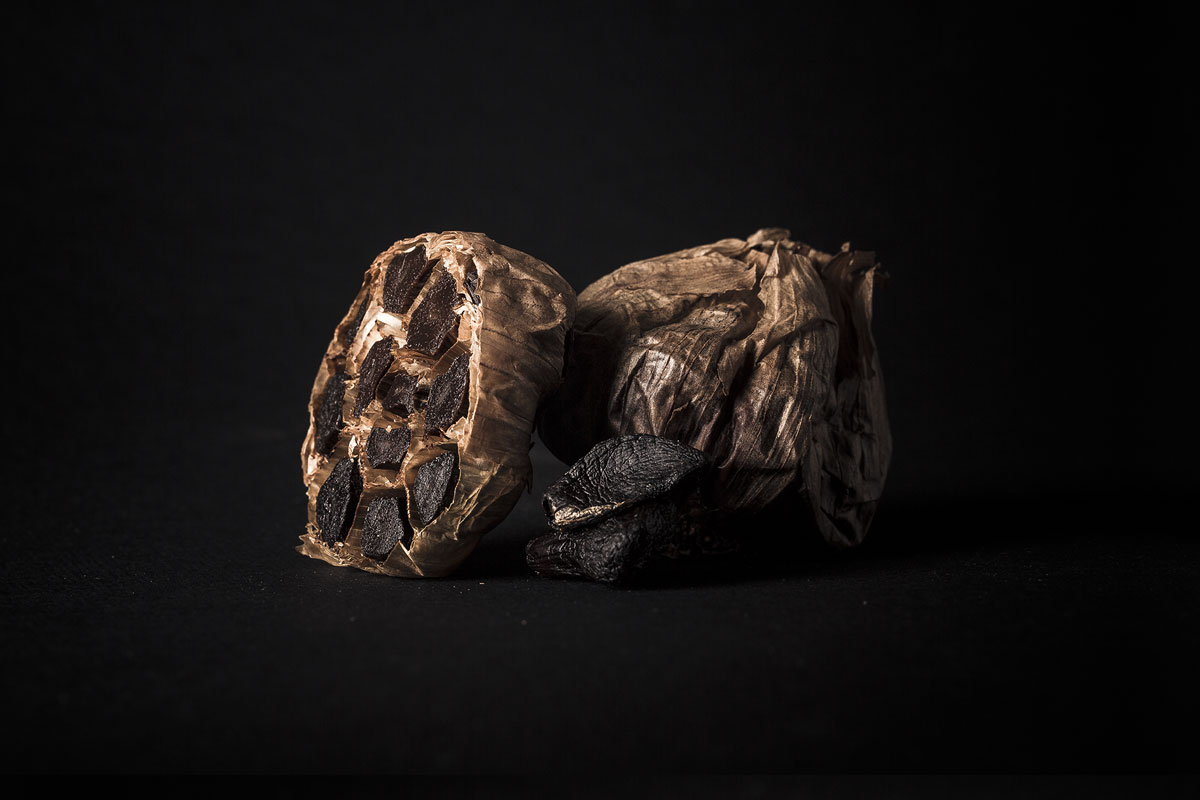
Not only does the transformation process to black garlic drastically change garlic’s flavor, it also experiences enhanced bioactivity due to physicochemical changes.
When compared to fresh garlic, black garlic is less pungent. This is because the sulfur compounds responsible for garlic’s pungency, allicin, are converted into antioxidant compounds, such as bioactive alkaloids and flavonoids, during its ageing process.
This transformation is supported by several studies that have found black garlic to demonstrate antioxidant, antiallergic, antidiabetes, anti-inflammation, and anticarcinogenic effects.
Fresh garlic contains approximately 63% of water, 28% of carbohydrate (fructans), 2.3% of organosulfur compounds, 2% of proteins (alliinase), 1.2% of free amino acids (arginine), and 1.5% of fiber. What it may be most known for however is the presence of SAC, a compound that contributes to garlic’s antidiabetic, antioxidant, and anti-inflammatory properties.
As for black garlic, during the thermal process, some chemical compounds from fresh garlic are converted into Amadori/Heyns compounds, which are key intermediate compounds of Maillard reaction (a chemical reaction between amino acids and reducing sugars that gives browned food its distinctive flavour), a process that greatly contributes to the savory flavors present within black garlic. The chemical compounds of aged black garlic are complicated, and its quality highly depends on the manufacturing process. Nevertheless, Black Garlic contains much more functional compounds, such as SAC, than fresh garlic.
A. D. V. E. R. T. I. S. I. N. G.

We took our relationship with black garlic a step further these past few months. We saw it as a white canvas and wanted to explore how we could incorporate its distinct flavors into our everyday life. This included attempted pairings which on paper shouldn’t have worked, but often pleasantly surprised us.
From cheese to ice cream, vinegar and dessert, we were able to appreciate the immense flexibility afforded to us via black garlic’s unique and varied flavor combinations.
It wasn’t easy; the process of creating black garlic releases volatile compounds found inside, essentially turning us into walking black garlic!
But it was worth it; experimenting with and observing how this product evolves took us beyond where our imagination could.
Although it may seem like a complicated process, at the most basic level black garlic is simply normal garlic that has gone through a maillard reaction and fermentation. Leave garlic in the right temperature and humidity for the right amount of time, and you will see a successful transformation.
As the sugars slowly convert from the maillard reaction, the right temperature ensures that the sugars break down slowly; the importance of having control over the black garlic lies in ensuring the ideal color and taste, as well as in obtaining the perfect sugars. If the process is rushed, the sugars can blacken too quickly and give off a bitter taste. But, when given time to blacken slowly, they produce the perfect color, smell and taste. Pyrolysis of the product breaks larger sugars down to smaller sizes, increasing the availability of molecules to heat and catalyzing a cascade of reactions. If the garlic is left too long it can even burn!
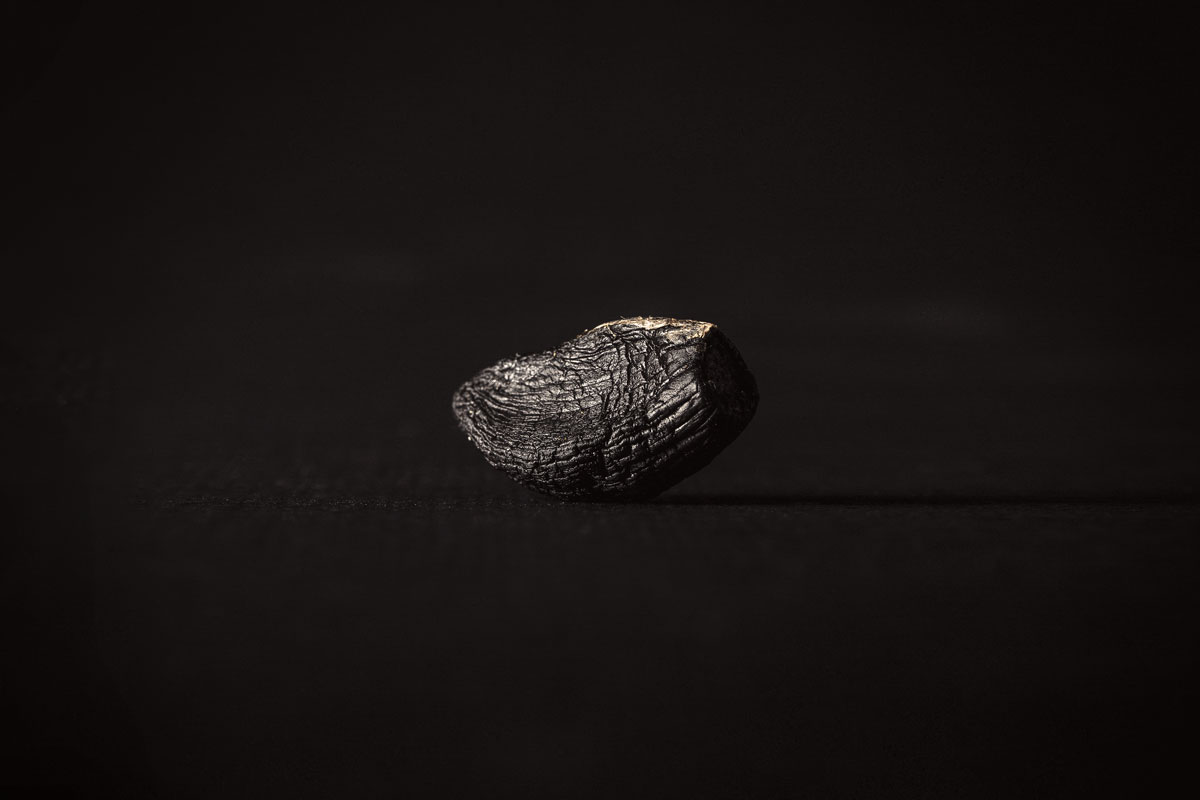
Follow these 4 simple steps to create your very own black magic:
6-8 weeks after starting, check on the garlic again. The garlic is ready if a clove is fully black, humid, and spreadable.
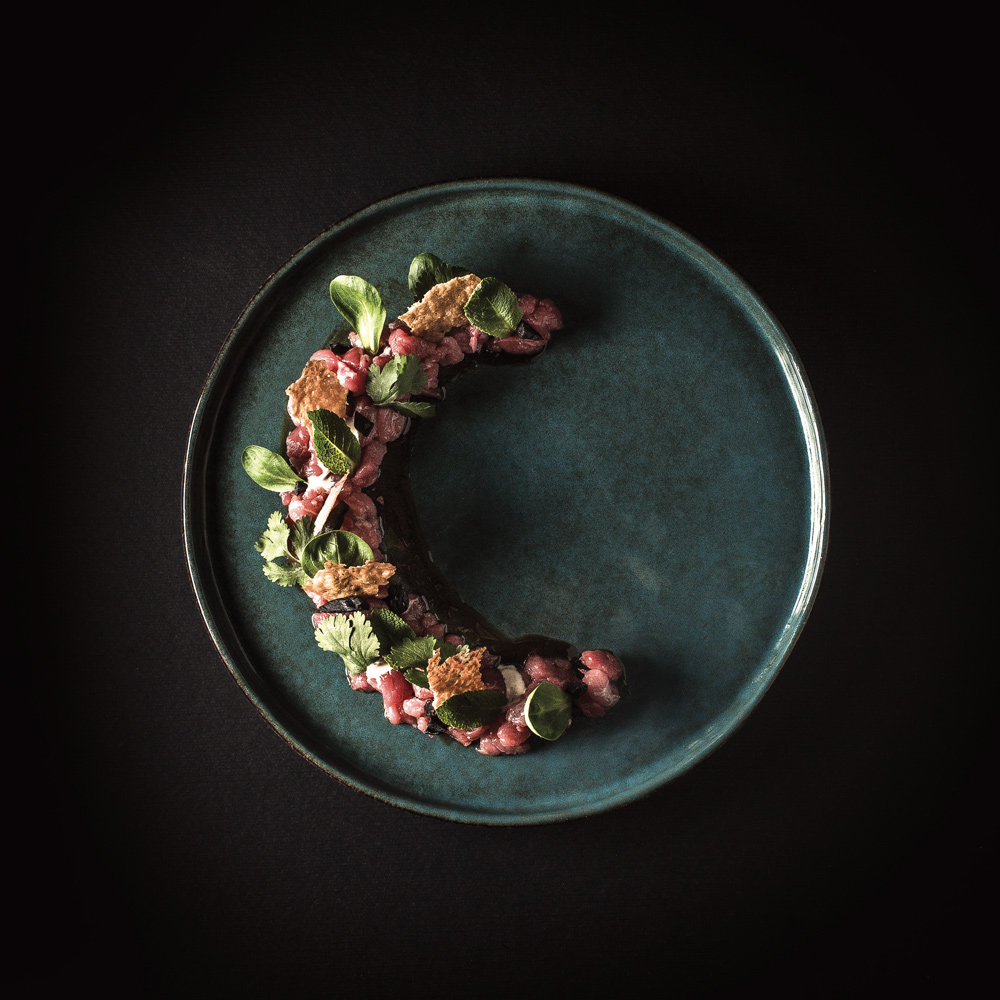 Black Garlic Tartar
Black Garlic Tartar
Once you have the basics down, there are many ways to adapt black garlic to many types of preparations, from savoury dishes to desserts. Below you’ll find two such recipes:
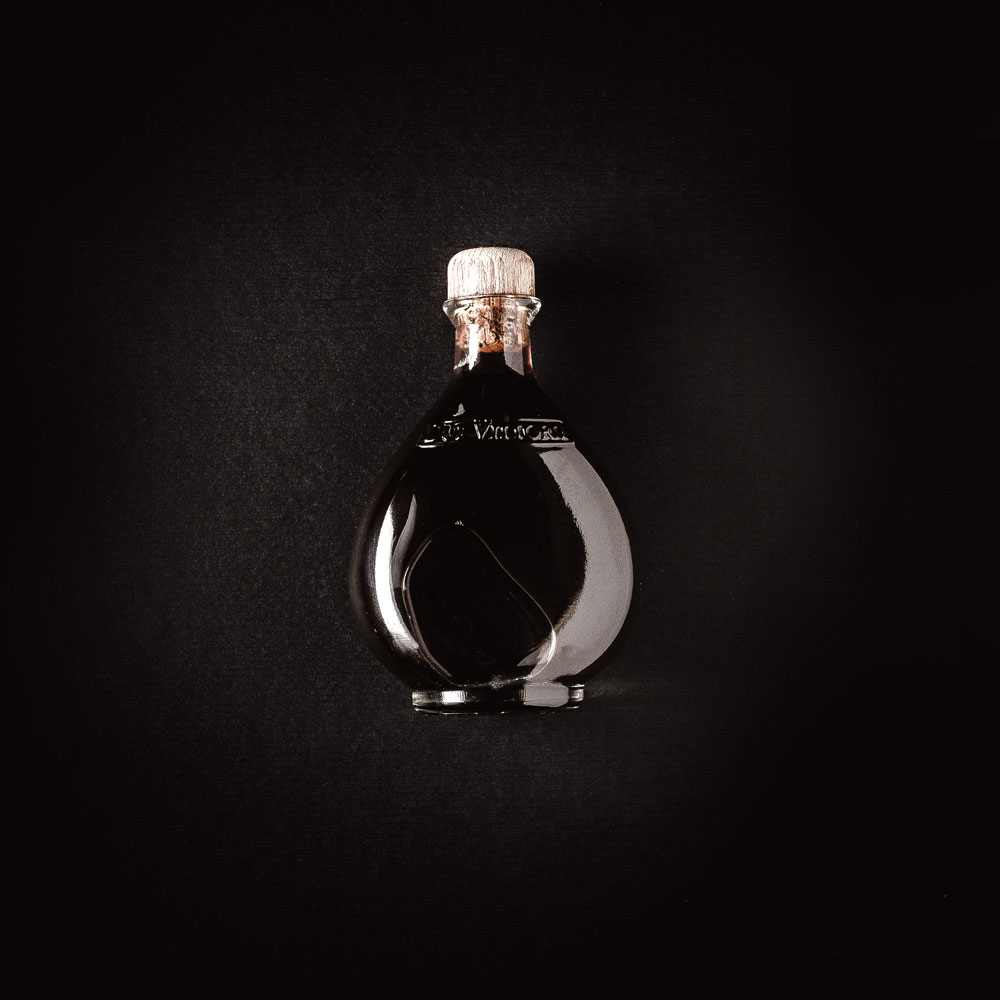
Since being in Italy, we have been fascinated by the idea of making our own black garlic balsamic vinegar. Below you’ll find a new twist on the traditional and most iconic vinegar in the world.
Here is what you need to get started:
| Black Garlic | 500 g |
| Water | 3.375 kg |
| Sugar | 1.125 kg |
| Wine yeast (dried) | 10 g |
| Unpasteurized apple cider vinegar | 40 ml of fresh liquid |
Special equipment: Normal aquarium air pump.
Before you start with acetic fermentation, you need to produce enough alcohol for the bacteria to thrive (the perfect ratio is about 5% alcohol). To do so, cut the heads of black garlic in half laterally, skins and all, then slice each half vertically into 4 pieces. Place the water and sugar in a large pot and bring the mixture to a simmer, whisking to dissolve the sugar. Add the garlic, then lower the heat so that the liquid is almost steaming. Let it sit, covered, on the stove for 1 hour, then remove from the heat and allow the mixture to cool to room temperature. Once cooled, transfer the covered black garlic stock to the fridge to continue to infuse overnight.
Strain the stock through a chinois into a bowl, using a ladle to force out as much liquid as possible without pushing any of the garlic’s flesh through. Pass the strained stock through a cheesecloth-lined sieve. Add the yeast to the black garlic stock, stir it with a clean spoon, and transfer to the fermentation vessel. Allow the stock to ferment in a cool room for 2 to 3 weeks. You now have black garlic wine. It should be noticeably alcoholic, while still having a good amount of residual sweetness.
Strain the black garlic wine through a cheesecloth-lined sieve and transfer it to the secondary fermentation vessel—either the same bucket you used to ferment the wine or a 5-liter wide-mouthed jar. Weigh the wine and add 20 % of unpasteurized apple cider vinegar. In order to speed up the process, you can use an air pump to introduce more oxygen in the liquid, making it more available for the acetic bacteria. Allow the wine to ferment into vinegar at room temperature for about 14 days. Taste the vinegar to ensure enough acetic acid has been produced and enough sugar is left. Once ready, add concentrated grape must to the vinegar in order to thicken the liquid. You can age this for years and it will continue to grow in its own particular character.
Another amazing application of black garlic is introduced in pastry; we experimented with making ice-cream and the result was incredible!
Here is what you need to get started:
| Fresh (good quality) whole-milk | 1 lt |
| Double Cream | 200 gr |
| Sucrose | 150 gr |
| Glucose (or substitute for 30 gr of sucrose) | 50 gr |
| Ice-Cream Stablizier (Carob Seed Powder) | 5 gr |
| Black Garlic pureè | 150 gr * |
*75 gr peeled black garlic blended in 75 gr warm milk.
Special equipment: Ice-cream machine.
Prepare the ice-cream base by mixing together all of the ingredients, except the black garlic pureè. Bring the mixture to 80°C, to pasteurize it, then cool it down to room temperature before adding the black garlic pureè. Try to avoid adding the pureè when the mixture is too warm because the heat will decrease the garlic aroma and flavour.
Cool down the mixture in the fridge. Once ready, stir it into your ice-cream machine until it reaches the right grade of firmness.
We recommend serving with some chocolate-coffee truffles.
References:
“On Food and Cooking. The Science and Lore of the Kitchen” by Harold McGee.
Photo credits: ©Aarón Gómez Figueroa